
Home
| Biography
| Works
| Features
| News and comment | Links |
Contact
This site celebrates the life and work of sculptor John
Cassidy (1860 - 1939).
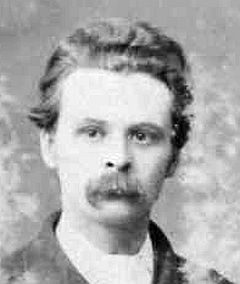
Reginald Barber was born in 1853 in Ulverston, Lancashire, son of a draper, Henry Barber and Amelia Tarlton Barber (Née Woodcock) who was an amateur artist.
He is believed to have trained at the Royal Academy Schools - certainly he was living in London, described as a 'pupil artist' in the 1871 census. The 1881 census also finds him in London, as a visitor, described as ' artist - portrait painter' in the house of a commercial traveller, William Kemp at 30 Alexandra Road, Willesden. Perhaps he was making a family portrait.
He was in Manchester when In 1884 he married Gertrude Hunt, born in Blackpool, although latterly working as a governess in Ulverston.
In 1888 he was elected a member of the Manchester Academy of Fine Arts, later becoming vice-president. The couple lived at 24 Lorne Grove, Rusholme which became their home and studio.
A newspaper critic in 1888 described him as 'coming to the front in local art'. His stock-in-trade was portraits, painted in a traditional style with a brown background, as seen on the Cassidy painting.
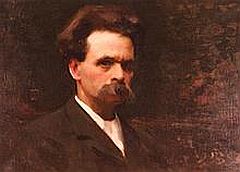
What appears to be possibly a self-portrait (above) shows the style.
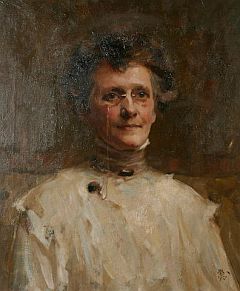
Another example is this portrait of his mother Amelia.
A review of the 1899 Manchester Academy exhibtion in the Manchester Evening News of 10 February:
Amongst the figure drawing (including portraiture) there
can be no doubt that the first place is taken by Mr.
Reginald Barber. His portraits are characterised by
fidelity and refinement, and have a degree of technical
completeness which proves how he has succeeded in
absorbing the best teaching of Paris. His portrait of
"George H. Walker Esq." is distinctly high-class and
scarcely capable of improvement. "Mrs George H. Walker' is
another portrait of great merit, good in colour and
expression, and with that peculiar feeling of loveable
character which makes a family portrait a pleasure to
relatives and friends. In "William Burton F.C.S." Mr
Barber has produced a strong and thoughtful representation
of a distinguished scientist; and in "One of a Company" he
has shown that he is capable of interpreting the humour
and and individuality of the jovial boon-companion of
country life. The picture is of great merit.
John Cassidy was also represented at the exhibition, with his bust of Reginald Barber as well as a figure of "Joan of Arc". Mr and Mrs Walker of Ashton-on-Mersey were patrons of Cassidy.
Barber also gave painting lessons: L.S. Lowry was a famous pupil.
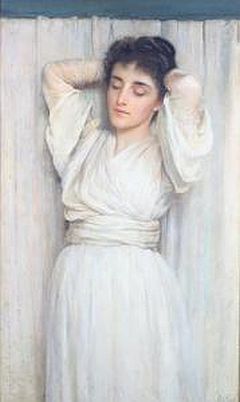
'An idle mood' of 1892 shows a pleasing scene, perhaps influenced by other artists of the day.
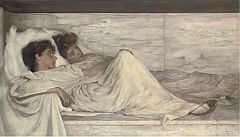
A comfortable silence (1893) has the look of an Alma-Tadema.
Despite all the critical acclaim, only two oils by Barber are in public collections, the other being of Manchester councillor Walter Butterworth. Most portraits would have been for private collections, and often these reach the art market without the name of the subject.
Gertrude died in 1906, and in 1909 Reginald married Eveline Stainsbury Hill, born in 1884, daughter of a dress salesman. They moved to a new home at 2 Trinity Avenue, Sale. After Reginald's death in 1928. Eveline moved to Reginald's home town, Ulverston, where she died in 1986 aged 101.
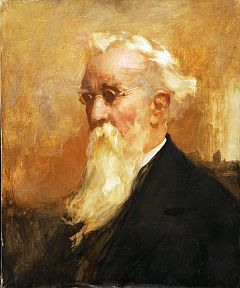
This portrait of art critic John Ruskin (1819-1900) is dated 1922.
Website created and compiled by Charlie Hulme and Lis Nicholson, with the invaluable assistance of the John Cassidy Committee, Slane Historical Society.
Reginald Barber and the Wolfe Tone Memorial
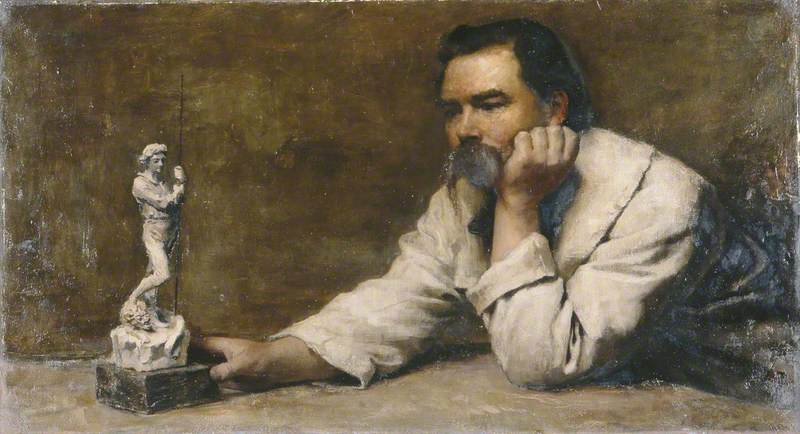
This painting of John Cassidy by Reginald Barber, painted in 1900 and acquired in 1928 by Manchester Art Gallery, has decorated our home page for about 20 years, but not until 2020 did we realise the significance of the work portrayed, thanks to a social media post by David Carden of Manchester Art Gallery in which he explains that it was part of a model for a work ...
The subject is Theobald Wolfe Tone, known as Wolfe Tone (1763 – 1798). Born in Dublin to a Protestant father and a Catholic mother who converted to Protestantism on her marriage, he trained as a lawyer. In October 1791 he helped found the Society of United Irishmen, initially a predominantly Protestant organisation that worked for parliamentary reforms, such as universal suffrage and Roman Catholic emancipation.... to be cast in bronze or marble on a huge scale. The sculpture would then be displayed in Merrion Square, Dublin as a commemoration to the men involved in the 1798 Irish Rebellion. Alas, due to political opposition the model remained just that. Cassidy was a renowned sculptor and Barber was a renowned painter, both considered Manchester artists. However, if you hadn’t guessed already - Cassidy was originally from Ireland hence his interest in creating a sculpture to commemorate the estimated 15,000 to 25,000 men who lost their lives.
In the words of the Encylopaedia Britannica:
In Dublin in 1792 he organized a Roman Catholic convention of elected delegates that forced Parliament to pass the Catholic Relief Act of 1793. Tone himself, however, was anticlerical and hoped for a general revolt against religious creeds in Ireland as a sequel to the attainment of Irish political freedom.He believed that Ireland should be an united independent country, with equal rights for all, irrespective of religion. By 1794 he had become an armed rebel against English rule and enlisted the support of the French government. He also tried to get support for the American revolutionary government, but without success.
On Dec. 16, 1796, Tone sailed from Brest with an invasion force of 43 ships and nearly 14,000 men, but the ships were dispersed by a storm after reaching the coast of west Cork and Kerry and returned to France. In 1798, an Irish rebellion broke out, and Tone managed to raise a limited French force. That September he entered Lough Swilly, Donegal, with 3,000 men, only to be captured.
He was tried in Dublin and sentenced to death by hanging, but died in prison, with self-inflicted wounds, before the sentence could be carried out. The rising was brutally suppressed by the British forces, with thousands of rebels killed.
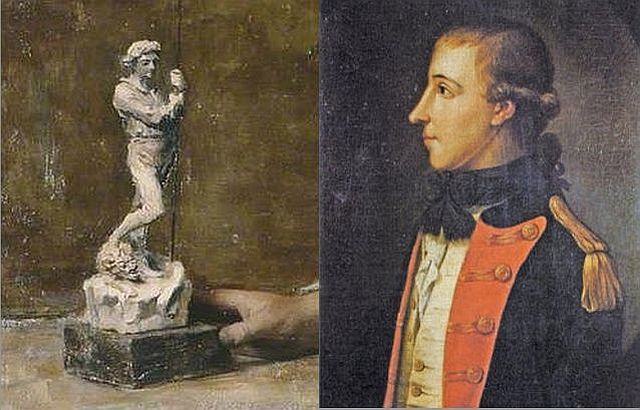
A hundred years later, a Committee was formed to fund a memorial in Dublin, and John Cassidy wrote to J.P. Dunne, secretary of the Committee offering his services. This, and subsequent letters, were preserved by leading republican Thomas Clarke, who had spent many spells in prison in his lifetime, culminating in his execution following the 1916 rising. His wife Kathleen Clarke, who later served in the Irish parliament and as Mayor of Dublin, retained the letters and many other documents. She died in 1972; in 2006 the papers were auctioned, and are now in the hands of the Irish National Library. The initial letter is transcribed below:
Dear Sir,The response must have been positive, as Cassidy wrote again with his suggested designs:
I have read with great interest of your intention to deservedly honour Wolfe Tone by the erection of a statue to his memory. Myself an Irishman, I am of course eagier to participate in the movement and appreciate the honour of being allowed to submit a sketch model for the proposed monument should this correspond with your arrangements. I may say, I have executed many public monuments & statues, which have been placed in various cities, for particulars of which may I refer you to the enclosed press cutting which also mentions upon my early career. If you will kindly favour me with your address, I should be pleased to send you photographs of my recent works. I hope to be favoured with your kind command[?] and should you entrust me with the commission I should use my ablest efforts to provide a creation, alike worthy of the cause, and an honour to our country.
Yours faithfully, John Cassidy.
'Magic lantern' slides were offered by Cassidy for use in lectures.The base, or architectural parts to be executed in Donegal red polished granite.
All the figures to be executed in bronze, cast by the 'cire perdu' process. Height of the principal figure surmounting the column, viz. Wolf Tone, nine feet. All the other figures except that of Erin to be eight feet in height, the figure of Erin to be nine feet high.
No.1 view represents Wolfe Tone, whilst manacled, uttering hs famous sentence 'For the cause which I have embraced, etc.'
No.2 The allegorical winged figure of patriotism induces Ireland's sons to become united for the freedom of their country, the clasping of hands is symbolical of the formation of the 'Society of United Irishmen'
No.3 represents Henry Joy McCracken at the storming of Antrim, marching with his men over the dead bodies of his enemy.
No.4 represents Father Murphy marshalling his men at Vinegar Hill.
No.5 Erin, with her harp & wolfhound by her side; with extended arms, in her left she clasps the national banner and with her right she proffers to her sons the wreath of Victory.
No.6: an unfinished sketch for No.5.
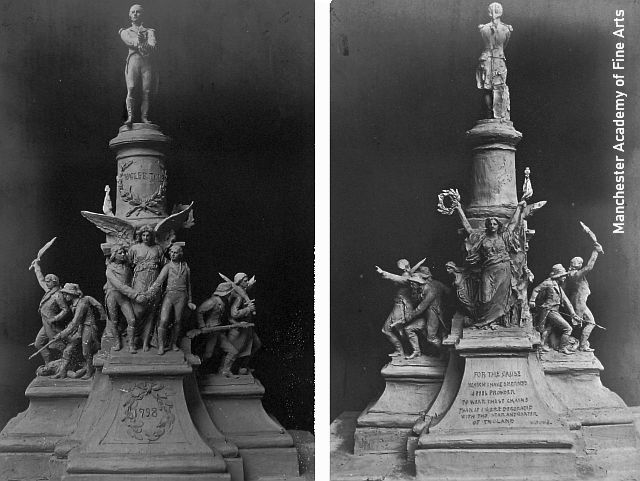
Copies of the photographs showing front and back, survive in the archive of the Manchester Academy of Fine Arts. The monument, if built, would have been about 36 feet tall. The 'allegorical figure' later re-appeared as feature of a number of Cassidy's war memorials.
Mr Dunne must have written again, suggesting some changes, including the use of marble rather than bronze which Cassidy strongly advised against, as 'the finest bronze' would last much longer in the open air. It's also noticeable from the model that the figure of Tone differs from the model in the painting.
Regarding a possible competion for the commission, Cassidy commented 'Let them come.' Whether Mr Dunne expected such a colossal multi-figure memorial is unknown. Three of Cassidy's sketches (probably small models of the figures) survived to be included in the exhibition held in 1914 at Cassidy's Lincoln Grove studio, but their current whereabouts are unknown; possibly destroyed when Cassidy's studio was closed in 1928.
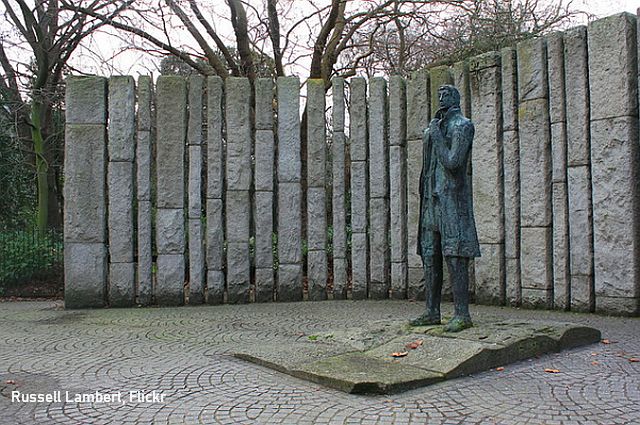
No more letters have survived; a foundation stone was laid, but the work was never made; it seems that insufficient funds were raised. A bronze statue of Tone by Edward Delaney stands in St Stephens Green today, repaired after being blown up during the 'troubles' in 1971.
Sources and thanks
- Manchester Art Gallery, especially David Corden for the inspiration.
- The Manchester Academy of Fine Arts, especially their archivist Sheila Dewsbury, for access to their archive.
- The original letters are on the National Library of Ireland website.
- Images from various art auction sites are included: any will be removed on request by copyright owners.
- Historical data from Ancestry.co.uk and the British Newspaper Archive.
Compiled by Charlie Hulme, November 2020.
Comments welcome: charlie@johncassidy.org.uk